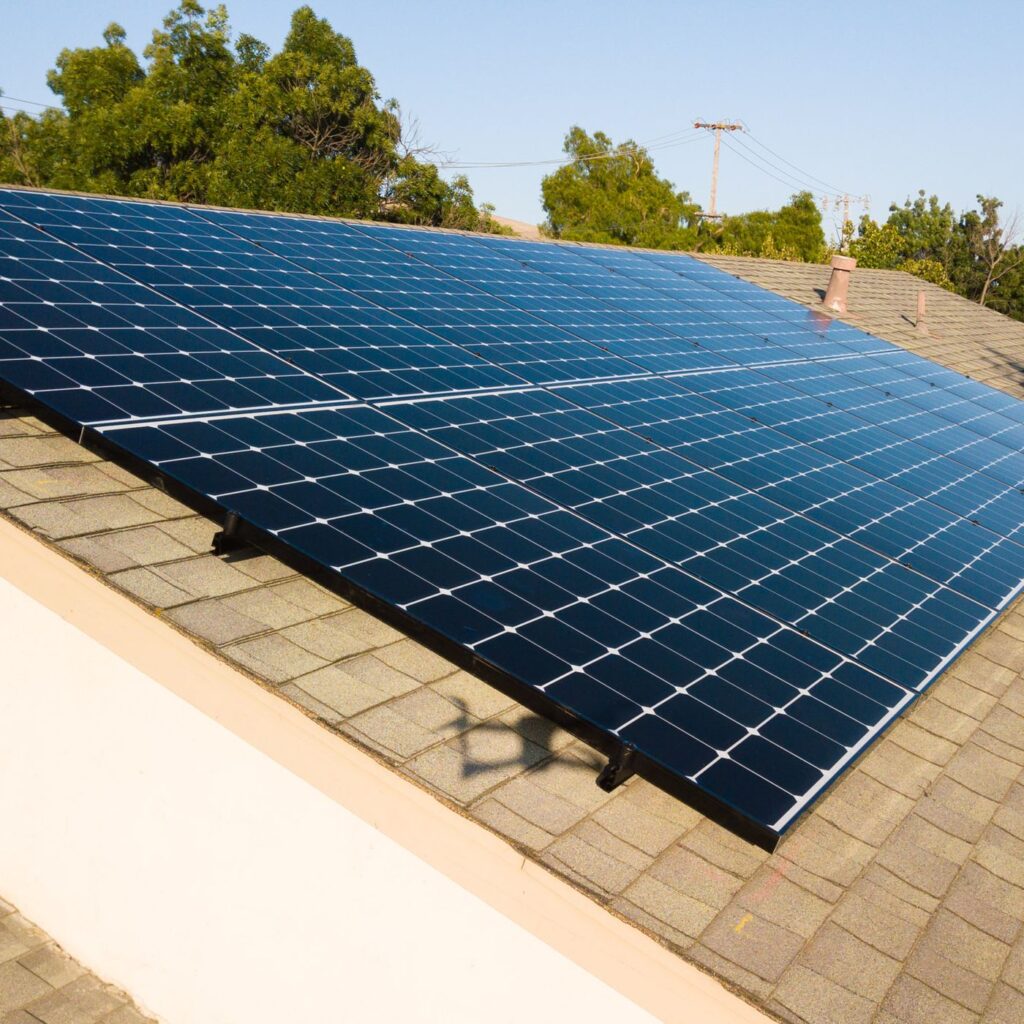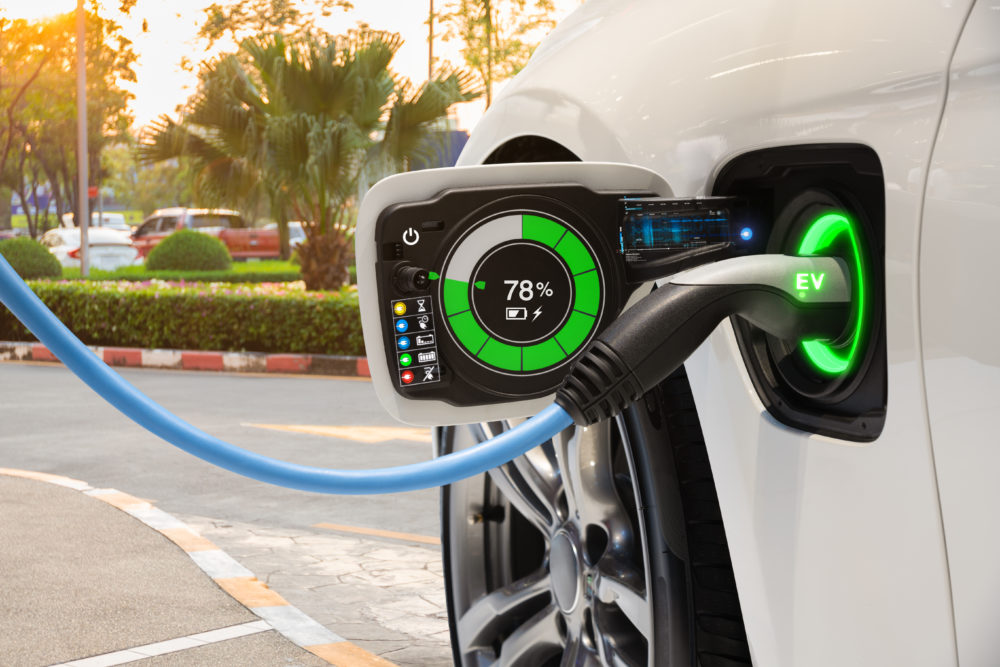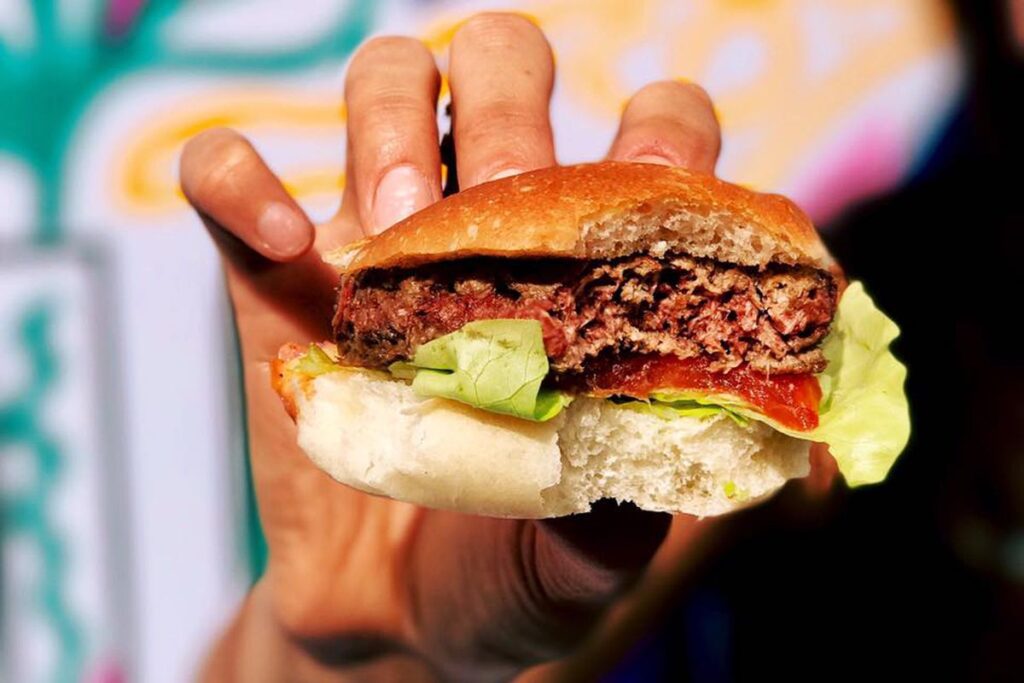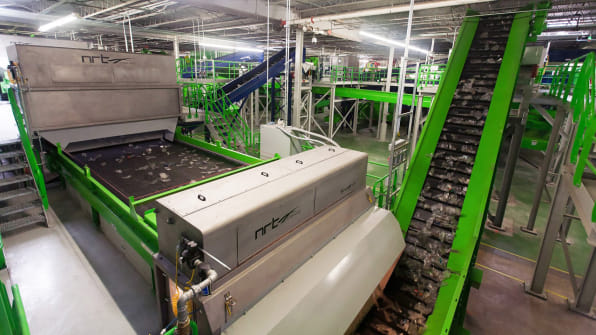View the original article here.
In the past decade, the topic of “sustainability trends” has been a subject of great discussion. As we approach a new decade with our climate in crisis, it becomes more important than ever to keep up with and invest in the latest in sustainability efforts- particularly in the world of business. We asked over one hundred eco-minded business leaders what they saw as the sustainability trends that will shape the next decade. Here are the top ten trends they identified. From relying on renewable energy to eating smarter, we were excited to see that they were largely positive and optimistic!

1. CHANGES TO ENERGY PRODUCTION
One of the most talked about sustainability trends is reducing our dependence on fossil fuels. Fossil fuels are nonrenewable sources of energy and are the leading contributor to climate change. In the United States, they’re to blame for more than 80 percent of greenhouse gas emissions — and 98 percent of CO2 emissions alone.
As of 2017, fossil fuels accounted for 80 percent of the energy in the US. While this number seems depressing, this is the lowest share since 1902! Renewables now account for 11 percent, the highest share since the late 1910s.
This is a promising reminder of the fact that collective efforts to invest in and improve our energy infrastructure are having a meaningful impact, and many of you felt hopeful that solar and wind energy will become far more commonplace in the next decade.
Caio Bersot at EnergyRates.ca reminded us that not only are solar and wind energy technologically promising, the trends towards micro-generation of electricity in homes using these renewable energy technologies is also extremely promising. Whether wind turbine, solar panels or even geothermal energy, renewable energy tech is becoming increasingly affordable. This will probably enable people to invest in renewable energy sources without having to spend too much on installation costs.

2. REDUCTION IN OUR ENERGY CONSUMPTION
Another one of the most promising sustainability trends in business is reducing energy consumption. Electric vehicles (especially to fuel freight transportation), LED lighting, smart homes, and LEED certified buildings were all mentioned frequently as critical areas of forward progress because they change how we consume energy (and how MUCH electricity and fuel we consume).
Catherine Pears at Wavelength Lighting shared that in commercial spaces, the installation of LED lighting is less of a fleeting trend and more of a necessary shift required of any energy-efficient building. Legislation in cities like New York City and Berkley, California are already implementing requirements for lighting upgrades to commercial buildings above a certain size— because there is simply no need to be wasting so much energy by keeping traditional light sources (like CFL and incandescent) in place. Now that LEDs have caught up to traditional lighting in terms of price point, and actually pay themselves back in a short amount of time, the choice is pretty clear: choose LEDs and save energy and money.
Liz Jeneault of Faveable saw electric vehicles as the most promising trend. In the coming year and beyond, we absolutely will see people purchasing more plug-in hybrid and fully electric vehicles. Everyone is familiar with Tesla, but automakers across the board are offering or developing more eco-friendly options. Many of the vehicles are coming in the form of an SUV. The SUV segment continues to rise in popularity, as people want just the right of amount performance, comfort, and spaciousness. They don’t want the gas guzzlers of the past, however.
That’s why new vehicles like the Audi e-tron have been such a big hit. The SUV is fully electric, but offers excellent performance. I definitely feel having more zero-emissions vehicle options out there will help consumers make smarter choices for the environment. Reducing our personal carbon emissions is a great way to help address global warming. Since many of us drive so much, opting for a plug-in hybrid or fully electric vehicle can have a big impact.
Caio Bersot also highlighted trends towards a smart home. People buy personal assistants, motion sensors, smart lockers and bulbs, cleaning robots, and smart appliances all the time. The main reason is that such devices make your life more comfortable and practical. However, brands are starting to notice the importance of adding sustainability to the mix. Smart home gadgets will become each time more energy-efficient, be it by using less electricity or for actively preventing you from spending more energy than you should. This will include smart light bulb kits, smart power strips, smart thermostats, smart energy monitors and even smart curtains.

3. PLANT BASED EATING
The next in our series of sustainable trends attempts to mitigate the environmental impact of our diets. Many responses to this question were optimistic about recent trends towards plant-based eating and meat substitutes. It’s no secret that eating meat has a big impact on the planet. Within the United States, agriculture and forestry together accounted for 9.0 percent of U.S. greenhouse gas emissions in 2017 (not to mention the negative impact that agriculture has on soil and waterways). What does this have to do with meat? 26 percent of the earth’s land is actually used for livestock grazing and one-third of the planet’s arable land is occupied by crop production used entirely as livestock feed.
According to John Moss, of English Blinds, the rise of veganism is perhaps the main sustainability trend to watch over the next decade. Nestle, the world’s largest food conglomerate, states that “the plant-based food trend is here to stay,” and America’s top takeaway marketplace GrubHub states that demand for orders of plant-based food have reached an all-time high. In fact, GrubHub’s data indicates that orders of vegan food increased 19% in the first half of 2017 compared to the same period of 2016, and GlobalData identified a 5% rise in the number of data subjects identifying as vegan between 2014 and 2017.
The ability to eat vegan without spending huge amounts of time and money doing so has also increased exponentially in recent years, making this a much more viable option for people who might have previously ruled it out due to time or financial constraints, which is helping veganism as a whole to snowball.
Sylvain Rochon was particularly favorable towards simulated meat substitute products like the Impossible Burger and lab-grown meat.
The “meatless meat” market is growing very quickly because most people don’t care whether their burger or steak is made of actual meat or not. They like the taste and texture and how it feels. These companies like Impossible Foods figured out a way to put vegetables together to simulate color, texture and taste of meat. Since real meat is environmentally problematic and expensive to produce, most people, taste and texture being equal, would prefer to buy the less expensive alternative “veggy-meat” than the real thing.
Lab-grown meat, once ready for mass production and cost-effectiveness, can be an amazingly effective alternative to real meat, giving rise to designer meats. It is much easier to alter muscle cells in a lab environment for taste, texture, color and shape than to do that on a real live animal. So expect different varieties of muscle cell cultures to emerge as sources for future meats without the need to harvest any cells from animals anymore.
And, just like vertical farming in controlled environments, lab-grown meats can be produced within city borders, near distribution centers. This is all great for the consumer’s health, our wallets and the environment, and it is all made possible by the massive amount of investment made in artificial intelligence plus automation over the past few years.

4. REGENERATIVE AGRICULTURE
While many were focused on plant based eating trends, others felt that regenerative agriculture, to support both plants and livestock production, is the more important game changing wave of progress.
Lucinda Cramsey of Moink Box highlights,there are only 60 years left of top soil on this earth if we do not take a step toward regenerative farming. I was born a poor farmer in LaBelle, MO, where I still live today. I’ve seen how big ag. companies abused the family farm, and their land. Without our top soil, we have no food. Without food, we have nothing as humans.
Regenerative agriculture – defined as a system of farming principles and practices that increases biodiversity, enriches soils, improves watersheds, and enhances ecosystem services – is an antidote to our current depletion of topsoil.
Regenerative Agriculture aims to capture carbon in soil and aboveground biomass, meaning that it can feed the planet while simultaneously reversing current global trends of atmospheric accumulation.
Nonprofit Regeneration International claims that transitioning 10% to 20% of agricultural production to best practice regenerative systems could sequester enough carbon dioxide to reverse climate change. That seems like a bold claim, but many independent farmers have been astounded by the results they’ve seen. Take, for example, Gabe Brown who moved to regenerative practices on his ranch in Bismark, North Dakota. Organic matter and rainwater uptake tripled while he was able to handle five-times the number of cattle he used to.
With big brands like Patagonia, Dr. Bronners and Justin’s Nut Butters behind the regenerative agriculture movement, this trend certainly holds promise.
5. CHANGES TO OUR RELATIONSHIP WITH PLASTIC
Many felt that the tides were finally turning on our relationship with single use plastic, in large part driven by the growing awareness of ocean plastic pollution and its impact on ocean life, acidification and the food and water we consume.
Louis Watton of Shiply shared, I believe that cutting down on excess plastic packaging has been and will continue to be the biggest sustainability trend over the next decade, and will have a big impact on both businesses and consumers.
The packaging industry is the single largest producer of plastic. In 2015 there was roughly 146 million tonnes of plastic produced for packaging (over twice the amount that was produced for building and construction) and 141 million tonnes of that plastic is wasted – as such, targeting this industry is very important in the fight for sustainability.
As long as high profile programs such as Blue Planet 2 continue to bring attention to the undeniable negative impact such massive plastic production and waste has on our planet I believe consumers will be hyper-aware of the products they buy and how they are packaged.
John Moss of English Blinds echoed these sentiments. The consumer-led drive to cut down on the use of nonrecyclable plastics is already well underway and this is a trend that is only going to strengthen and snowball in the coming decade. We’re already in a position where a significant number of consumers across all demographic groups are willing to call out businesses of every caliber on the needless use of disposable plastics, and/or vote with their feet when it comes to leaving stores with poor plastic credentials without making a purchase.
Robert Piller of Eco Marketing Solutions reminded us that much damage has already been done. [Plastic reduction] will continue to trend, but will it help reverse ecological challenges? Well, that remains to be seen. The damage done so far is staggering, as between 4.8 and 12.7 million metric tons of plastic materials end up in oceans each year (National Center for Ecological Analysis and Synthesis), and 100,000 mammals and 1 million seabirds are killed each year by consuming plastics (The Ocean Conference). Fixing this problem would require every business and consumer to go green in a big and bold way.

6. CHANGES TO RECYCLING AND COMPOSTING
While strides have been made with composting and recycling in the US and worldwide, both have major challenges. Between the China Ban (and our even more problematic recycling practices before the China Ban) and composters struggling to accommodate (and now banning) materials like bioplastic that add no nutrients to their output, our system of sustainable waste management needs an overhaul.
Many responses were optimistic about technologies that can help us improve both recycling and composting in the future.
Jeff Kneal of The Critter Depot reminded us that our longstanding approach to composting (designed largely for yard waste) is not ideal going forward. One of the biggest trends is composting with black soldier fly larva. Black soldier fly larva are create a highly nutritious compost, that performs better than chemical fertilizers. Black soldier fly larva can also compost meat, fish, and other complex proteins, making them more efficient than worms. BSFL will consume and produce about twice their body weight per day, reducing landfill, and the need for large trash trucks. And, because of their protein, black soldier fly larva are also great food sources for reptiles and chickens.
These types of innovations can help us significantly improve industrial composting, and the output from industrial compost.
Most respondents recognized that recycling is essential to sustainability long-term. We will continue to produce goods out of metal, glass, plastic, paper and other materials – and when these items are at the end of their life, recycling them into new useful goods is optimal.
Improving single stream recycling involves three things:
(1) improved sorting technology, so Materials Recovery Facilities can better and more cleanly sort even more waste items into separate, usable materials. An example of an innovation here is that currently needed – MRFs cannot accept plastic bags because they are so flimsy and get caught in the gears of machinery. Investments are being made to better sort this material out at the front of th sorting line. If successful, plastic film (a material that is technically fairly easy to recycle) could start being accepted curbside nationwide!
(2) improving reclaiming and remanufacturing with recycled content, so manufacturers can readily and effectively use the materials. For example, printing on recycled plastic and paper can be challenging. Colors are less vibrant. Advancements that enable manufacturers to produce goods made with 100% post consumer waste that are still excellent for printing.
(3) developing end materials and products that can be made easily with this recycled content.
For example, as highlighted by Ronald D’souza of Angel Jackets, several brands have taken the initiative of producing sustainable t-shirts made out of plastic water bottles, including the significant brand Ralph Lauren. The most notable benefit of such trend is that it replaces harmful human-made polystyrene with waste plastic bottles that would otherwise be dumped in the ocean. “Approximately 18,834,000,000 are dumped in the landfills every year. While, each plastic bottle can take up to 700 years to perish. Although this method of recycling plastic is still in its developing phase, in the next decade, we will witness more products made of plastic bottles, including Jackets, pants, bags, hats, and most wearable and even customers would opt for such items. Recycling plastic, especially for creating something sustainable is undoubtedly a positive step that will help us reverse the looming ecological challenges the world is facing.
7. GOVERNMENT REGULATION AND POLICIES
The single issue that garnered pessimism about progress was the role that governments play in pushing true, long-term progress when it comes to sustainability.
Though globally, there are a lot of countries whose political leaders have made the planet a core priority, many lamented the fact that this is not true of the US’s current administration. Many did, however, recognize that 2020 is just around the corner and that a new wave of optimism could emerge with our next election – [I’m] not at all confident under the current US administration. I’m somewhat optimistic if we see a new administration elected in 2020. Others also highlighted the role that local and state politicians have played in the US to keep environmental progress going during this time.

8. CONSUMER AWARENESS AND YOUTH ADVOCATES
Even those who felt hopeless about politics voiced optimism of just how passionate the next generation of consumers and citizens is when it comes to climate change and marine plastic pollution.
There is hope of the impact this will have on companies and governments.
Dr. Nardia Haigh shared, Greta Thunberg’s Fridays for Climate movement is reinvigorating people who have worked on climate change for many years, activist investors, and other social movements in related areas. The breadth of industries affected will continue to grow. Climate change activism is no longer of concern just to energy companies, but it stands to affect all kinds of companies as these activists are consumers, students, investors, entrepreneurs, parents, and leaders. All this appears likely to make climate change a strategic issue for all companies, and therefore competition on the basis of one’s climate change credentials will continue to grow.
Sarah Hancock of Best Company shared a similar sentiment. In my opinion, the sustainability trend that will have the biggest impact on business and consumers in the next decade is the increased awareness, education, and action surrounding sustainability initiatives.
People are and will continue taking to social media and the streets to demand action from governments and businesses on environmental issues. Up-and-coming Gen Z’ers will continue to be important influencers in these movements. Expectations for companies to address issues such as climate change, deforestation, and waste will continue to grow. Consumers, especially younger ones, will increasingly shift their loyalties to companies they perceive to be acting on these issues.
As a result, I expect to see many businesses increasing their sustainability commitments through more responsible recycling practices, efforts to become more energy efficient, and donations to environmental causes. A growing number of organizations will likely take the next step and put in the necessary work to gain B Corporation status as well.
9. THE MOVE TO SLOW FASHION
Sheri Turnbow of Bespoke Southerly was one of the many respondents that highlighted the exciting trends towards sustainability in the fashion industry. Fashion is considered one of the largest industry polluters in the world.
Textile factories produce toxic wastewater, synthetic fibers get released into the ocean through washing, fast fashion has created a culture of disposable clothing where very little is recycled and most ends up in landfills — 92 million tons of solid waste dumped in landfills each year.
As a result of these issues, we are seeing trends, particularly among smaller entrepreneurial brands to implement systems to reduce waste at all stages of fashion production. Possibly the most prominent of these is the made to order model. Made to order means each garment is made when the customer orders it – so cut one at a time vs. creating vast amounts of inventory that may never be sold. This model also enables personalization and customizations of clothing that is increasingly popular with millennials.
Steven Li of The Rising echoed these sentiments. High fashion, including Burberry and Gucci can afford to source sustainable materials, but brands like H&M will have a hard time following suit. Consumers are more aware of their environmental footprint than ever before, and when it comes to fashion, consumer decisions will most certainly weigh in the sustainability of the brands they buy from. Fashion has long been an industry optimized for the end product. Supply chains often top emissions charts and it’s good to see brands are pivoting to be more sustainable.

